Fisher Safety: Coldwater Survival
If you accidentally fall into the river without a PFD or life jacket on—you have a chance of drowning.The good news is you can survive a fall into the river.
The Columbia River is known for its winds, heavy waves and currents. Cold water temperatures can also make it dangerous. From February through April, the water temperature on the river is around 50ºf. From May until the latter part of August, temperatures usually range between mid 50ºF to 68ºF.
See the info below on Coldwater Accidents. Falling into the water at these temperatures can be fatal.
Coldwater Accidents
In water under 50ºF = 60% drowned
In water between 50-68ºF = 34% drowned
Of those who drowned = 43% were less than 6 feet from safety
Of those who drowned = 90% were not wearing life jackets
—National statistics from the U.S. Coast Guard Drowning Report (2007) and Lifesaving Society Study (2007) that are consistent with Columbia River accidental drowning.
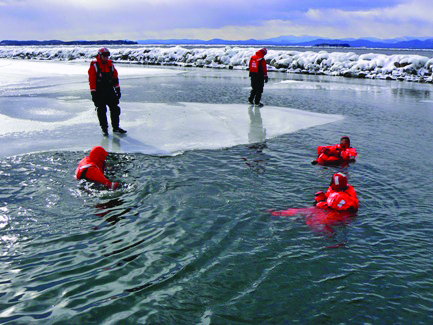
Your odds of surviving a fall into the river are much better with the PFD. Here is how a PFD can help you survive:
- The very first thing to remember is just survive the first minute. Don’t panic and get your breathing under control.
- Keep your head above water. The gasp reflex is automatic, and if your head is underwater, you could take in enough water to drown.
- Control your breathing. Gasping and hyperventilation is a natural reaction to the cold. If you can’t control your breathing, not only could you have difficulty swimming, you could breathe water in and drown. Concentrate on breathing slowly and evenly.
- After getting your breathing under control that first minute, there are 10 minutes of meaningful movement in your arms and legs to complete escape or survival activities. Use that time to re-board your boat and summon help via an emergency distress call or signal. As the body cools, muscles and nerves will not work well and even if you are a good swimmer, swimming failure looms. Without some kind of flotation aid, a person will drown.
- Depending on water temperature and other factors, it will be at least one hour before you risk becoming unconscious due to hypothermia. A PFD will keep your airway above water even if you are unconscious, and even an unconscious person may still be successfully rescued and revived.
from “Beyond Cold Water Bootcamp”
Distances on the water are very deceptive. Generally individuals should not consider swimming unless they are very close to shore or a floating object, or they have little chance of rescue. Columbia River fishers have been successfully rescued after waiting six hours with their floating boat. Try to get into the boat or as far out of the water as possible. Boats with their flotation removed or without places to cling to in rough water may not offer this option. Fishers wearing a PFD can be more liberal in deciding to swim because flotation allows them to gradually make their way to safety and they can still float if they become incapacitated by the cold.
“Hypothermia Frostbite and Other Cold Injuries” Giesbrecht and Wilkerson, 2006
Clothing is invaluable; if you wind up in the river, it will help insulate you, and nearly all of it is neutrally buoyant. An average-size person wearing light clothing and a PFD may survive three to six hours in 50ºF water by remaining still.
Safety Positions
Swimming may not be the best option. The rushing of the cold water across high heat loss areas (head, neck, arm pits, body sides, and groin) causes a victim to lose heat much more rapidly. The best solution is to get as much of the body out of the water or to assume a fetal position or HELP (Heat Escape Lessening Position) to reduce heat loss. For a group, use the Huddle position.
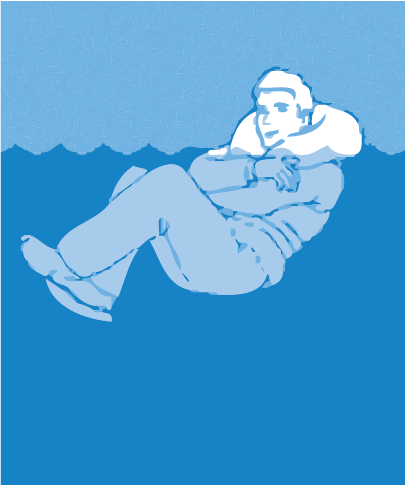
Use the HELP position if you fall overboard alone.
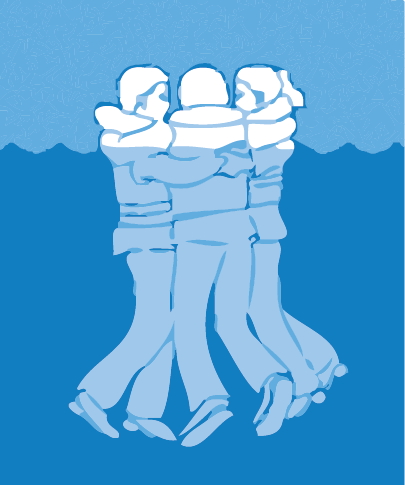
Use the Huddle position if you fall overboard with others to stay together and help preserve heat better.
Hypothermia
TREAT HYPOTHERMIA VICTIMS GENTLY!
- Call 911.
- Check vital signs and begin CPR if necessary.
- Remove wet clothing if possible. If that is not possible, wrap the victim, wet clothing and all, in a vapor barrier (plastic sheeting or a tarp), and then place in as much insulation as possible (i.e., one or even two sleeping bags). The tarp will keep the insulating material from getting wet and losing its effectiveness.
- Insulate from further heat loss by dressing the victim in dry clothes and/or wrapping in a blanket.
- Slowly re-warm the victim through body-to-body contact, warm towels, or a heating pad on the high heat loss areas.
Remember, the ultimate goal during a rescue and treatment is to be gentle and keep the victim horizontal.
from “Beyond Cold Water Bootcamp”
Once someone is rescued, insulate them to prevent further heat loss and apply heat to the neck, head, and other high heat-loss areas of the body. (See graphic.) Perform CPR on the rescued person and if needed, first aid.
Signalling your distress is most important, and multiple methods will improve your odds of getting help. A personal locator beacon, flares, waterproofed cell phone, or a VHF radio used along with or in combination, are going to improve your odds of getting help.
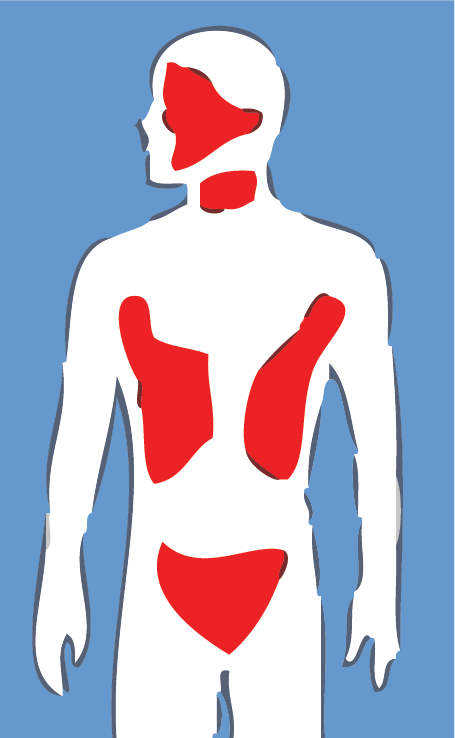
High heat loss areas of the body.
Tribal Fishers Handbook
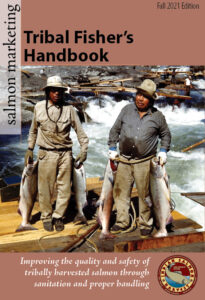 The above content is an excerpt from CRITFC’s Salmon Marketing Program’s Tribal Fishers Handbook. This guide helps tribal fishers improve the quality and safety of their salmon harvest. The handbook contains four sections:
The above content is an excerpt from CRITFC’s Salmon Marketing Program’s Tribal Fishers Handbook. This guide helps tribal fishers improve the quality and safety of their salmon harvest. The handbook contains four sections:
- Honoring the Resource: The latest information on sanitation and proper handling of harvested salmon to improve its quality and value
- Marketing: Tips and contacts about selling salmon to wholesalers, retailers, and directly to the public
- Safety: Covid safety for fishers, boat safety, and cold water survival
- Boat Maintenance: Simple tips on engine maintenance and fiberglass repair
